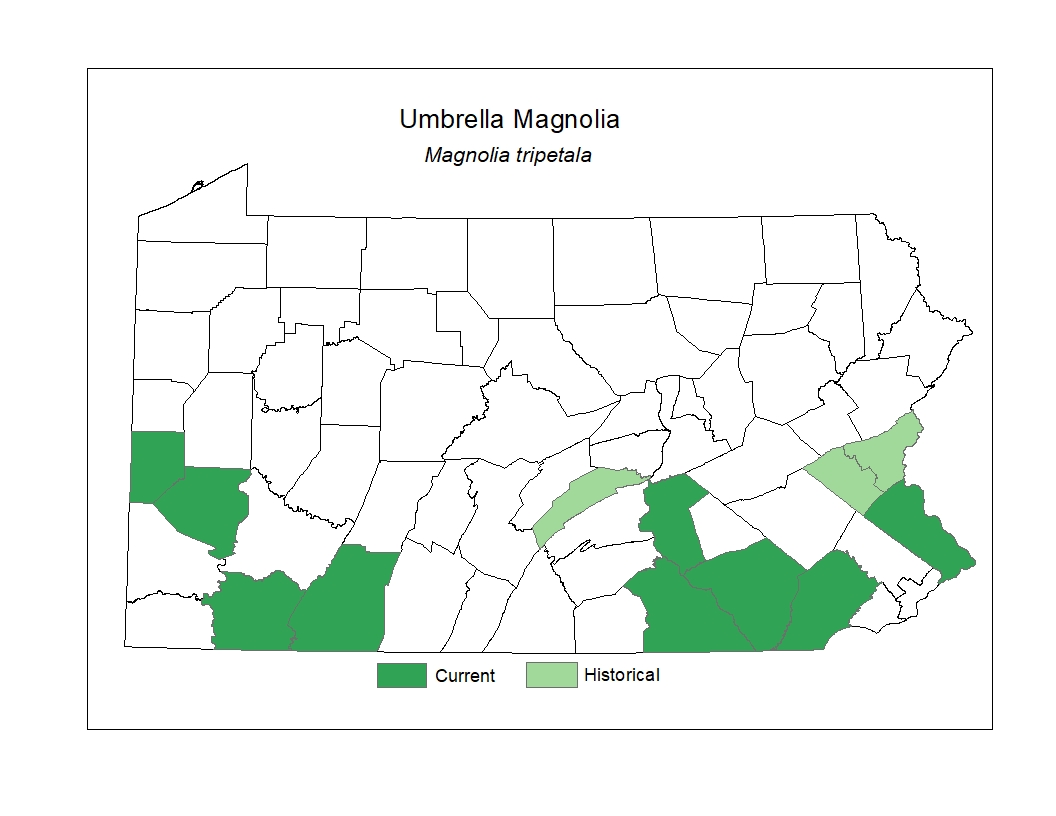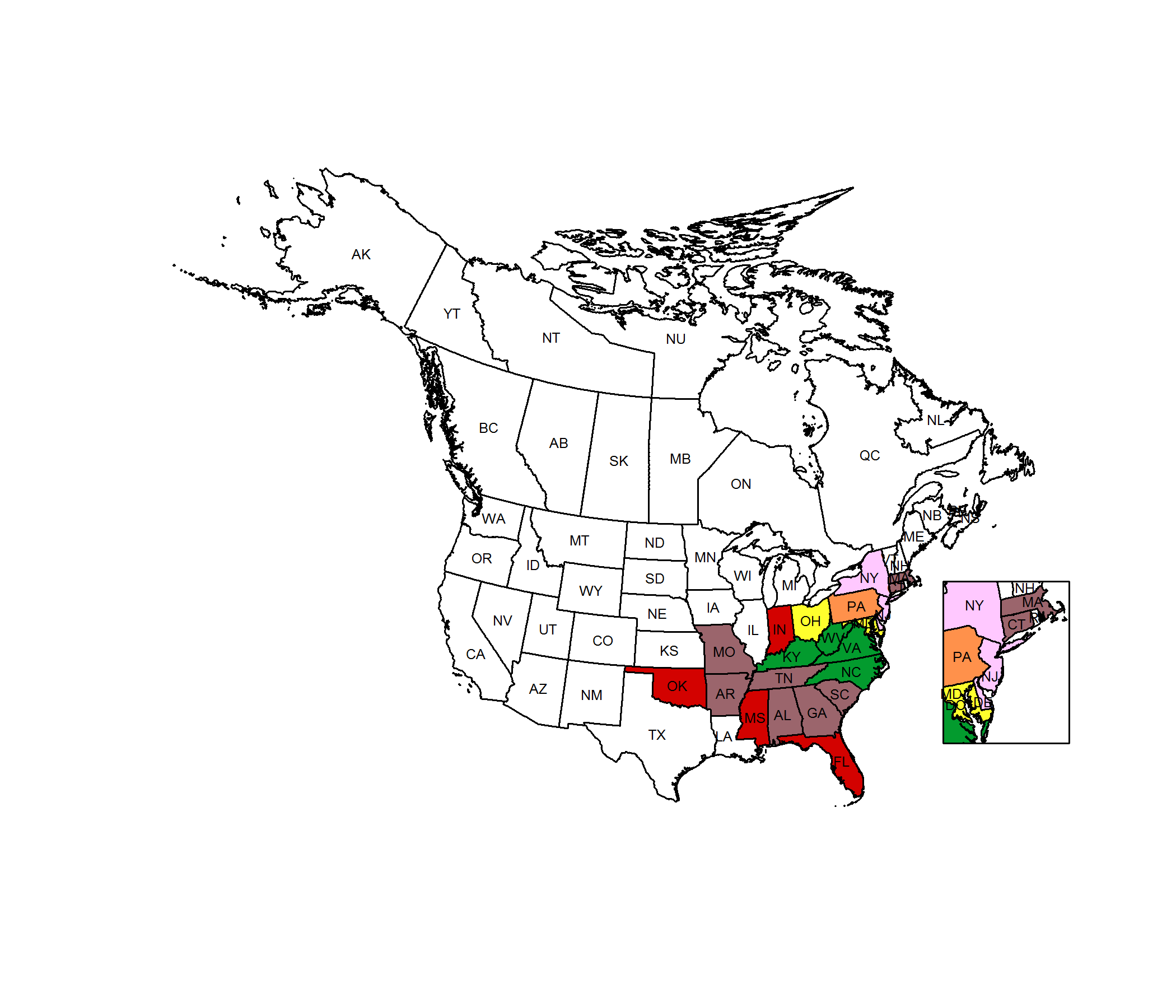 Species Factsheets
Species Factsheets
Magnolia tripetala
Umbrella-tree
State Status: Pennsylvania Threatened (PT)
PBS Status: Pennsylvania Rare (PR)
Federal Status:
Global Rank: G5
![]() rank interpretation
rank interpretation
State Rank: S2
Did You Know?
There are over 125 species of magnolia in eastern North America, and they are among the most ancient of the flowering plants - fossil records date back more than 100 million years.
Description
Umbrella-tree (Magnolia tripetala) is a small deciduous tree that often has several trunks and grows up to 10m tall. The leaves are alternate, untoothed on the margin, conspicuously large (up to 60cm long), oval to oblong in shape, and usually clustered at the ends of the stout branchlets. The flowers, appearing in May, have large, showy, white petals that are up to 14cm long. The fruits are aggregated in a 7-12cm cone-like structure, with the enclosed seeds having an orange or red outer covering.
Rank Justification
Imperiled in the nation or state because of rarity due to very restricted range, very few populations (often 20 or fewer), steep declines, or other factors making it very vulnerable to extirpation from the nation or state.
PABS
The PA Biological Survey (PABS) considers umbrella-tree to be a species of special concern, based on the few occurrences that have been recently confirmed. It has a PA legal rarity status of Threatened and a PABS suggested rarity status of Rare. About twenty-five occurrences have been documented in the state.
Habitat
It grows on rich wooded slopes, wooded streambanks, and in moist ravines. The species has also been cultivated in locations (e.g., the Philadelphia area) that are believed to be outside its natural range in the state, and has escaped from these plantings to woodlands.
Survey Dates
Flowers in May with the leaves; cone-like fruit structure year-round
Distribution
In Pennsylvania, it reaches a northern border of its natural range, and has been documented in several southern counties.

Management
Maintenance of natural populations of umbrella-tree and its habitat type will be enhanced by creating buffers around fragmented woodland habitat and controlling invasive species. Populations of umbrella-tree that have resulted from escapes from cultivation are not considered to be of conservation significance.
Conservation Status Map

NatureServe. 2017. NatureServe Explorer: An online encyclopedia of life [web application]. Version 7.1. NatureServe, Arlington, Virginia. Available https://explorer.natureserve.org.
https://www.floridata.com/Plants/Magnoliaceae/Magnolia%20tripetala/839
- NatureServe. 2018. NatureServe Explorer: An online encyclopedia of life [web application]. Version 7.1. NatureServe, Arlington, Virginia. Available at https://www.natureserve.org/explorer
- Pennsylvania Natural Heritage Program. 2018.
- Rhoads, A.F. and W.M. Klein, Jr. 1993. The Vascular Flora of Pennsylvania. American Philosophical Society, Philadelphia, Pennsylvania. Rhoads, A.F. and T.A. Block.
- 2007. The Plants of Pennsylvania: An Illustrated Manual. 2nd edition. University of Pennsylvania Press, Philadelphia, Pennsylvania.







